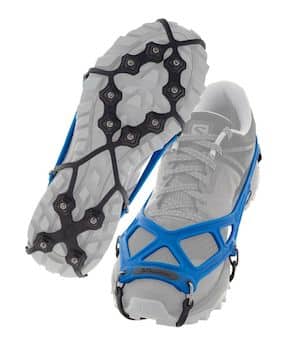Winter runners, this one is for you! For those who love or are seeing out winter running, Great Runs has put together a ‘winter running hub‘, consisting of tips & tricks for winter running, a piece on what makes for a great winter running city, and several lists of favorite running cities and best winter running routes.
Here, we’ve put all our winter running ‘tricks & tips’ into one place: how to find a great winter run; strategies for safety; and some tips for winter running gear.
How to Find a Great Winter Run
We’ll state with the obvious: you need to be in or find a spot with a reliable winter climate. We’ve put together a list of cities that have consistent snowfall & cold temps. Once the location is chosen, how to find the the most scenic winter running route? In winter, we tend to avoid paths along the water, as they are first to ice up and can be exposed. It’s generally prettier to run in a park or on a wooded path, in order to enjoy the snowy canopy. We also like running in scenic residential areas, as the leafy streets of summer turn into streets lined with snow-draped trees in winter. Plus, residential neighborhoods are most likely to be sanded, plowed, and lit. Tip: Look for the ‘Gorgeous Residential‘ keyword or ‘Fantastic Neighborhood‘ category on the on the Great Runs site.
Lighting is another factor, since you’re much likelier to be running when it’s dark. We find that in cities located in far northern latitudes, major pedestrian and multi-use paths are well-lit.
One more factor is snow depth. It’s not so easy to run when the snow is deep. It’s helpful to know which parks and paths are maintained in winter (i.e. cleared of snow). In larger parks and forest areas, look for those that are groomed or maintained for winter sports, such as X-C skiing or fat tire biking. In those areas, be sure to respect the other winter recreational uses (don’t step in the ski tracks!). Another tip in more rural areas or winter recreation areas is to run on maintained snowmobile trails — but please use caution!
Winter Running Safety
 It’s helpful to know which roads, sidewalks, and paths are maintained. In fresh snow or if it’s icy, the wider, main streets and sidewalks of downtown areas and school districts are usually plowed first. University campuses are also a great idea in winter, as their sidewalks & paths tend to get cleared. Some runners tend to do shorter laps or loops around areas they know are best maintained, especially when conditions are slippery or snowy.
It’s helpful to know which roads, sidewalks, and paths are maintained. In fresh snow or if it’s icy, the wider, main streets and sidewalks of downtown areas and school districts are usually plowed first. University campuses are also a great idea in winter, as their sidewalks & paths tend to get cleared. Some runners tend to do shorter laps or loops around areas they know are best maintained, especially when conditions are slippery or snowy.One final tip for winter running: know when to say “this is a treadmill” day. In other words, don’t risk the glories of spring running by getting injured. If it’s sleet or freezing rain, fuhgeddaboudit. Avoid running when you think there might be black ice, especially if it’s dark.
Dressing for Winter Running
Great strides have been made in clothing for winter activities in recent years. We tend to think in layers for winter running. The general principle is to have the right clothing for ‘gradations’ of temperature: around freezing, 20-30F range, 10-20F range, and below 10F — either the right layering strategy, or gear graded for certain temperatures. For type of clothing Avoid cotton, as the minute you stop, it becomes wet and cold.Anything below 40F, you’ll need gloves and certainly something around your ears. If below 20F, definitely want to cover the whole head. For gloves, there are some models that have fingertips that enable for easier pressing of phone buttons so you can look at maps or get the right tunes going.

Finally, eyewear: If it’s snowing hard outside, you’re gonna need goggles. They can tend to fog up, more when running than from other winter activities like skiing, for some reason. Of course, you can always wait till the snow ends and the plows have had a couple of turns through the neighborhood…
Our List of the Best Cities for Winter Running Winter Running Hub
